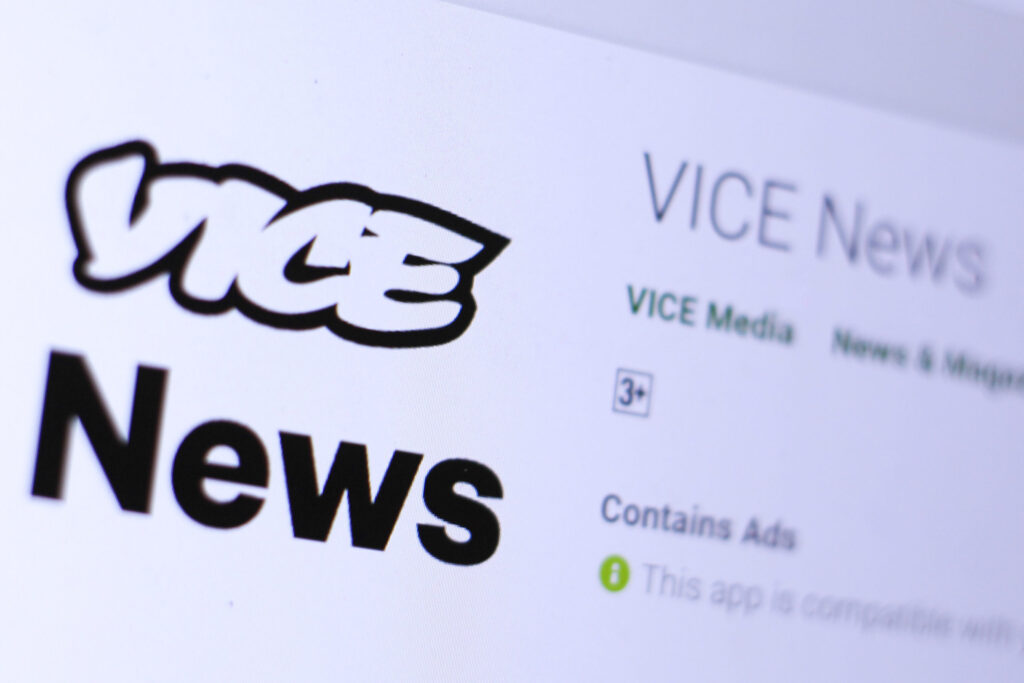Layoffs are just the beginning of bad news for Vice and BuzzFeed
August 26, 2021
The future is bleak for woke digital companies like BuzzFeed and Vice as they continue to lay off workers and struggle for organic growth.
The youth-oriented, progressive publication Vice, laid off 17 staffers today, including Meredith Balkus, Vice’s managing editor of digital. Variety obtained a copy of the internal memo, “cutbacks coming in North America from the Vice Digital and women-focused Refinery29 groups.”
The news comes a year after the company chopped 155 from its staff over a revenue slowdown because of the pandemic.
For the woke media, it’s another blow that should be looked at as more of a trend than an aberration.
In the spring, BuzzFeed cut 47 from HuffPost, a month after acquiring the digital publication from Verizon Media. Those layoffs were preceded by cuts in July of 2020 for BuzzFeed they said were due to the pandemic.
The layoffs came as BuzzFeed struggled to meet the grand destiny that media, political figures and progressive thinkers lined out for it in 2006 and beyond. Once touted as a way to mobilize youth votes, the publication has become a clickbait machine with woke tendencies in its news division.
It’s struggling to keep up with hipper, fleeter, rivals.
“The pandemic had caused a drop of 30 percent-plus in their advertising revenue. It’s important to remember that only 18 months ago, the digital media industry was looking pretty bleak,” Ellie Bamford, the global head of media and connections at the consultancy R/GA told the Hollywood Reporter. “There were massive layoffs and pay cuts across the board, and that was after many years of fighting for life against Facebook and Google, who sucked all the air out of the room and grabbed all the ad revenues.”
Since 2006, BuzzFeed has raised at least $500 million from investors, with the latest round in 2016 that saw NBCUniversal put in $200 million, with a total valuation of $1.7 billion at the time.
In June, the company announced that it would be going public using a special purpose acquisition company or SPAC.
A SPAC takes an existing publicly traded company with a small valuation and backs an operating company, like Buzzfeed, into the public stock to create a company that trades on the stock exchange. Usually, such companies are eyeing more acquisitions, and they want to use the company’s public stock as cash to finance the splurges.
“SPAC deals have become an increasingly popular route to go public over this past year. Several digital publishers, including Bustle Digital Group, Vox Media and Vice Media, had held talks about a market debut via a SPAC,” said CNBC when reporting on the Buzzfeed deal.
Indeed, indications for BuzzFeed, at least, is that the market might not be ready for them. While that might not come as surprise if you’ve watched industry layoffs, layoffs aren’t always the best way of measuring a company’s – or an industry’s– health.
But the total value of a company indisputably is a good way of taking the temperature of the organization. BuzzFeed’s presentation documents to support their SPAC offering show that the company has gone from a $1.7 billion valuation in 2016 to a $1.5 billion valuation estimated for the fourth-quarter offering in 2021, a loss of $200 million over 5 years.
And the biggest investor in BuzzFeed, NBCUniversal, is apparently not pleased.
“NBCUniversal ultimately approved the deal after reaching an agreement in April with BuzzFeed Chief Executive Jonah Peretti that guaranteed it concessions while still leaving it facing a loss of roughly $100 million, the people said,” according to the Wall Street Journal.
So the remaining question is: How many people will lose their jobs at other, woke publications once the BuzzFeed buying binge starts.
The answer is probably a lot.
Because as the company rolls out their acquisitions, using stock as payment, the layoffs like those we saw at HuffPost will continue as the only way for costs to match the decline in revenues.
